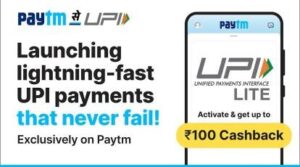Prepaid Payment Instruments (PPI) charges will be imposed on merchant transactions on the Unified Payments Interface (UPI) starting on April 1, according to the National Payments Corporation of India (NPCI).
In a recent circular titled Prepaid Payment Instruments (PPI) fees on merchant transactions on Unified Payments Interface (UPI), the UPI governing body stated that transactions using PPIs on UPI would be required to pay 1.1% of the transaction value for amounts over Rs 2,000. On April 1, 2023, the interchange charge will be implemented, and it will then be revisited once again by September 30, 2023.
The use of wallets or cards as prepaid payment instruments (PPIs) for transactions amount more than Rs 2,000 will incur these charges. In light of this, this interchange fee will not apply to payments made using UPI, such as Paytm, Phonepe, or Google Pay, to friends, relatives, or anybody else, or to a merchant’s bank account.
NPCI stated in a tweet: “UPI is free, fast, secure, and seamless. Every month, over 8 billion transactions are processed free for customers and merchants using bank accounts.”
The interchange fee is charged in connection with card payments and is used to mitigate the expenses of transaction authorization, processing, and acceptance. Banks and payment service providers expect to increase their revenue by implementing interchange fees.
The interchange fee will be charged on a variety of services in the range of 0.5% to 1.1%. Fuel will be subject to an interchange fee of 0.5%; telecom, utilities/post office, education, and agriculture will have a fee of 0.7%; supermarkets will have a fee of 0.9%; and mutual funds, the government, insurance, and railroads will have a fee of 1%.
Transactions between a PPI wallet and a bank account that are peer-to-peer (P2P) or peer-to-peer-merchant (P2PM) would not be subject to the interchange charge. A wallet-loading service fee of about 15 basis points will be paid by the PPI issuer to the remitter bank.
Almost 99.9% of all UPI transactions have historically been made via the method of involving a bank account in a UPI-enabled app for payment.
According to the NPCI’s circular, the proposed interchange charge is in line with the World Bank and Council on Payments and Market Infrastructures’ suggestions for an interchange charge of up to 1.15 percent for UPI transactions.
The Reserve Bank of India (RBI), the principal regulator of payment systems in India, is ultimately responsible for making the final decision. The NPCI has sent its suggestion to the RBI, and now it must wait to see if the RBI will accept it.










